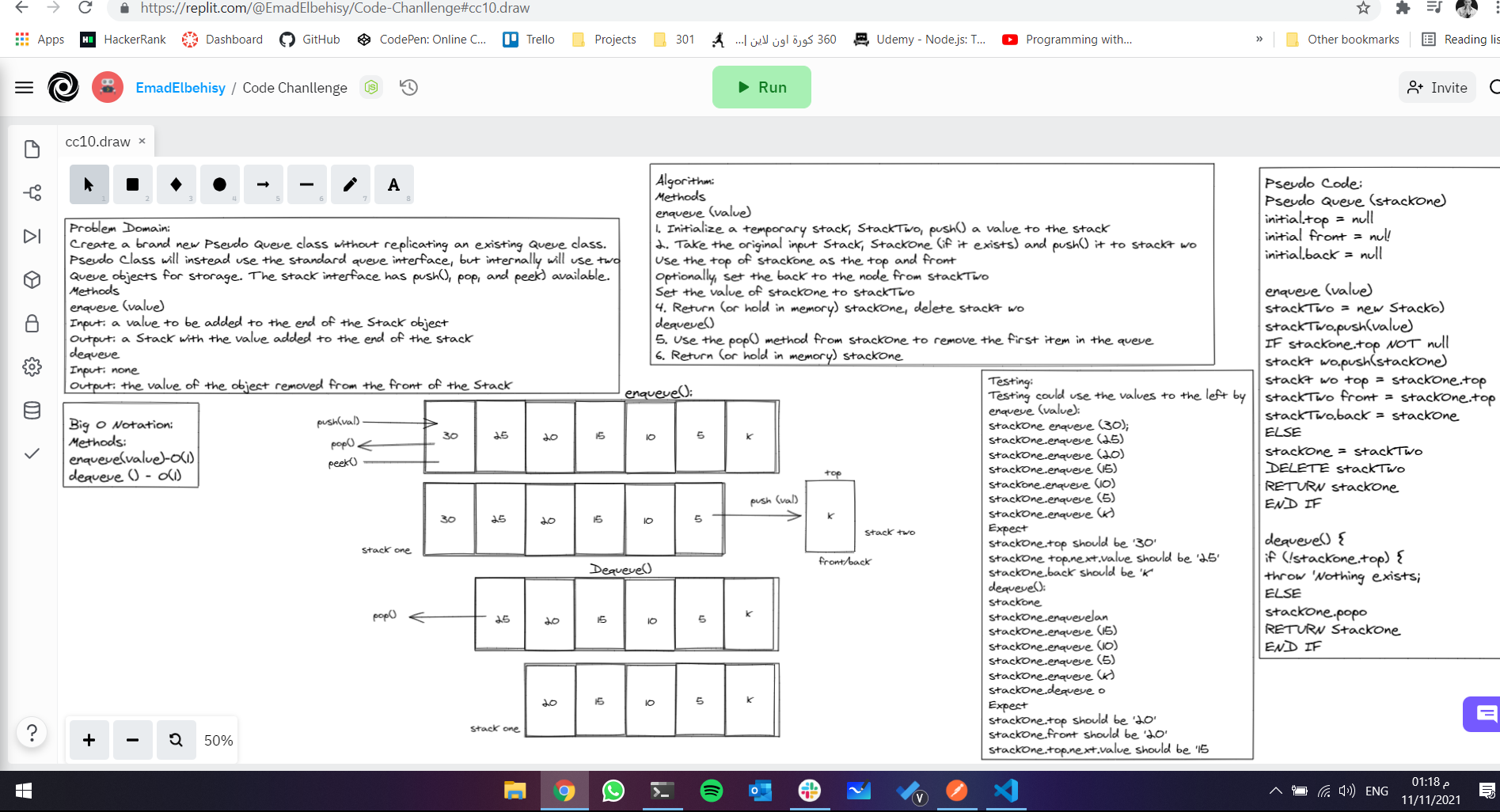data-structures-and-algorithms
Stacks and Queues
Write three classes, Stack, Queue and Node. The Stack class will have a top property, Queue will have a front property(1). The following methods can be called on the Stack and Queue classes.
Challenge
Stack should have these four different methods:
.push(value)(adds a node withvalueto thetopof the stack)
Input: avalueobject to add to the stack’stop
Output: none
.pop()(remove the node at thetopof the stack and return itsvalue)
Input: none
Output: thevalueof the node removed from thetopof the stack
Edge Case(s):
- Attempting to
pop()on an empty stack throws an exception
.peek()(returns thevalueof the node at thetopof the stack)
Input: none
Output: thevalueof the node at thetopof the stack
Edge case(s):
- Attempting to
peek()on an empty stack throws an exception
.isEmpty()(returns a boolean representing whether the stack is empty)
Input: none
Output: a boolean representing whether the stack is empty
Queue should have these four different methods:
.enqueue(value)(adds a node withvalueto theendof the queue)
Input: avalueobject to add to the queue’send
Output: none
.dequeue()(remove the node at thefrontof the queue and return itsvalue)
Input: none
Output: thevalueof the node removed from thefrontof the queue
Edge Case(s):
- Attempting to
dequeue()on an empty queue throws an exception
.peek()(returns thevalueof the node at thefrontof the queue)
Input: none
Output: thevalueof the node at thefrontof the queue
Edge case(s):
- Attempting to
peek()on an empty queue throws an exception
.isEmpty()(returns a boolean representing whether the queue is empty)
Input: none
Output: a boolean representing whether the queue is empty
PseudoQueue should have these three different methods:
.enqueue(value)(adds a node withvalueto theendof the pseudoqueue)
Input: avalueobject to add to the pseudoqueue’send
Output: none
.dequeue()(remove the node at thetopof the pseudoqueue and return itsvalue)
Input: none
Output: thevalueof the node removed from thetopof the pseudoqueue
Edge Case(s):
- Attempting to
dequeue()on an empty pseudoqueue throws an exception
.peek()(returns thevalueof the node at thetopof the pseudoqueue)
Input: none
Output: thevalueof the node at thetopof the pseudoqueue
Edge case(s):
- Attempting to
peek()on an empty pseudoqueue throws an exception
Approach & Efficiency
(1) I found that it was necessary to also add an end property to the Queue and PseudoQueue class to maintain O(1) time performance.
Big O Notation
- All methods on all classes are O(1) for time and space.
Testing
Write tests to prove the following functionality:
- Stacks
- Can successfully push onto a stack
- Can successfully push multiple values onto a stack
- Can successfully pop off the stack
- Can successfully empty a stack after multiple pops
- Can successfully peek the next item on the stack
- Can successfully instantiate an empty stack
- Calling pop or peek on empty stack raises exception
- Queues
- Can successfully enqueue into a queue
- Can successfully enqueue multiple values into a queue
- Can successfully dequeue out of a queue the expected value
- Can successfully peek into a queue, seeing the expected value
- Can successfully empty a queue after multiple dequeues
- Can successfully instantiate an empty queue
- Calling dequeue or peek on empty queue raises exception
Whiteboard(s)
